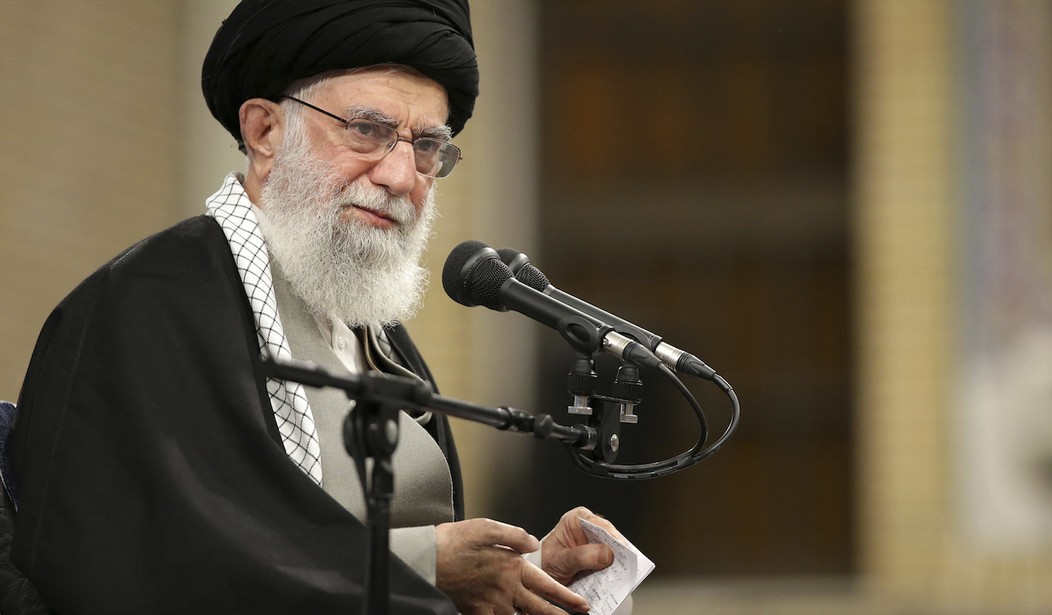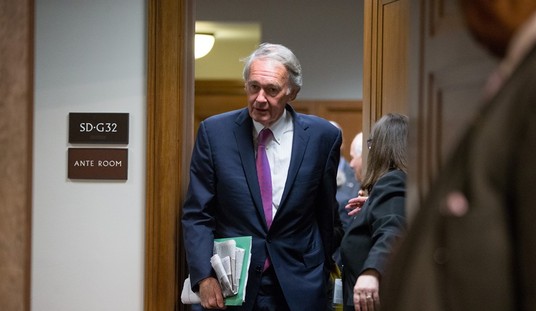The Iranian regime and its proxies are not finished avenging the death of Qassem Soleimani. In predicting their next move, the United States would be wise to consider the religious inspiration for their military strategy.
Iranian action is often viewed through the lens of rational self-interest. Stratfor’s Scott Steward called Iran’s main proxy in Hezbollah a “radical but rational” organization. Others believe the Iranian regime is a practical government concerned with typical things that affect their power and the material interests of their benefactors in Russia and China. That’s a mistake. They may employ logical tactics but they are ultimately inspired by religious dogma.
Listen to them. The Supreme Leader of the Iranian theocracy, Ayatollah Ali Khamenei, said in 2012 that they must “prepare the environment”—make war—for the “reappearance” of “Imam Mahdi,” known as the 12th Imam. In Shia eschatology, the Mahdi returns to achieve global Islamic domination. Eight years ago was the last time Khamenei made such a notable public statement—until he led Friday prayers in Tehran on January 17 and leveled threats against the United States and Europe.
For Islamists, warfare is one of the most important avenues for religious self-expression. The regime named its air defense system Bavar 373—Bavar means to “believe” and the number corresponds to name of their prophet in the Arabic alphabet.
Recommended
Timing matters for this devout administration. Religious doctrine determined military action against U.S. bases in Iraq. The rocket attacks commenced at roughly the same hour as Soleimani’s “martyrdom” and only after the religiously prescribed three days of mourning.
Religious self-expression in warfare also affords the Iranian government room to rationalize inhumane action. I argued in a recent interview that Iran might retaliate for the death of Soleimani by attacking a soft target specifically chosen to lead others to blame the United States. I was wrong in one detail: I did not think its revenge would be “accidental.”
Iranian Foreign Minister Mohammad Javad Zarif quickly called Iran’s downing of a Ukrainian airliner the result of “U.S. adventurism.” Others played right into their hands. Democratic presidential candidate Pete Buttigieg and Canadian Prime Minister Justin Trudeau, among others, laid ultimate blame at the feet of the United States. One CNN analyst called it the result of America’s “reckless escalation.” A Washington Post writer said it was an unfortunate response from a “jumpy” Iran spurred on by U.S. rhetoric.
We must recognize that religiosity is central to their military strategy. Considering their future moves from the standpoint of religious self-expression would help to anticipate their action as it relates to location and timing. Notable dates on the Western calendar—specifically significant to Shia sects, or Islam generally – could be of interest in setting future action:
- February 1 to 11 celebrates the anniversary of the 1979 Islamic Revolution. Attacks during or after could serve as a symbolic show of strength.
- February 12 is the 12th anniversary of the Israeli assassination of revered Hezbollah leader Imad Mughniyeh, an opportunity for religious expression in light of their belief in the 12th imam.
- August 28-29 is Ashoura, marking the day Shia mourn the death of Husayn Ali in the Battle of Karbala in A.D. 680—in a war that led to the split in Islam between rival Sunni and Shia sects. Think targets in the Sunni heartland of Saudi Arabia.
- In October, Hezbollah—the Iranian-backed terrorist military Soleimani advised and supported—attacked U.S. Marine and French barracks in Beirut, Lebanon and kidnapped and murdered CIA station chief William Buckley. The regime could target October for more American causalities.
The Battle of Hattin in the year 1187 saw Saladin break the Crusaders stronghold over Jerusalem and paved the way for its recapture by Islamic forces. Although an especially Sunni war, the historic victory reminds Iran’s Shia leadership of the territory their generation lost to the Jewish state. The date of the Battle of Hattin is no less ironic: July 4th.
Not an exhaustive list, nor an exact science. But rest assured, the regime’s plans for revenge will be executed with symbolic timing and with elements of religious self-expression designed to rationalize even the most inhumane actions. We would be well advised to appreciate it.
Dr. David Grantham is a Senior Fellow with Center for a Secure Free Society, holds a PhD in history from Texas Christian University and holds a Master of Science in International Relations from Troy University. Grantham is a veteran, having served in both Iraq and Afghanistan.

























Join the conversation as a VIP Member